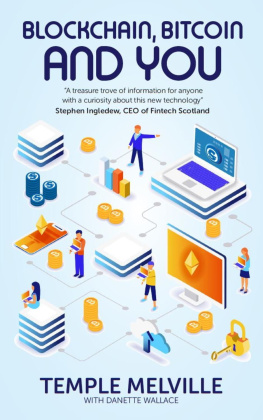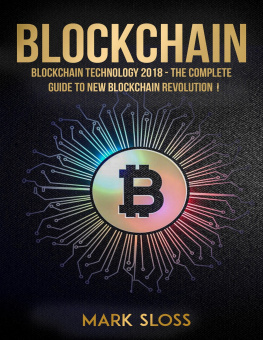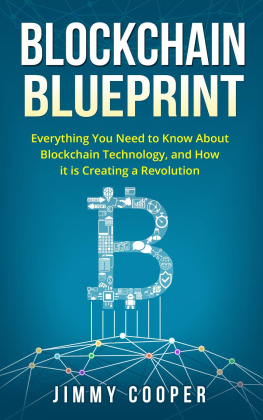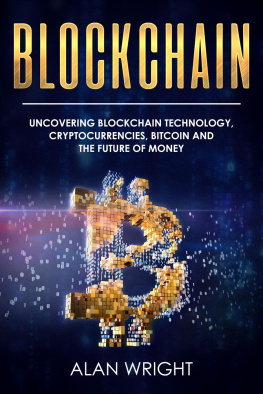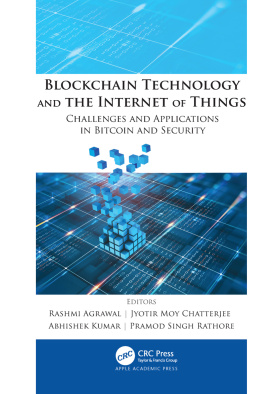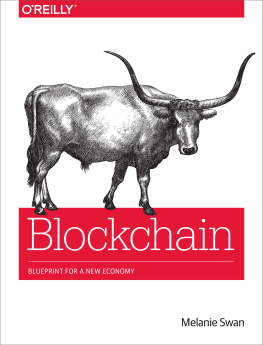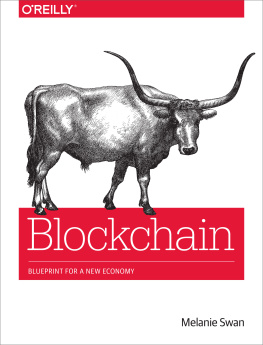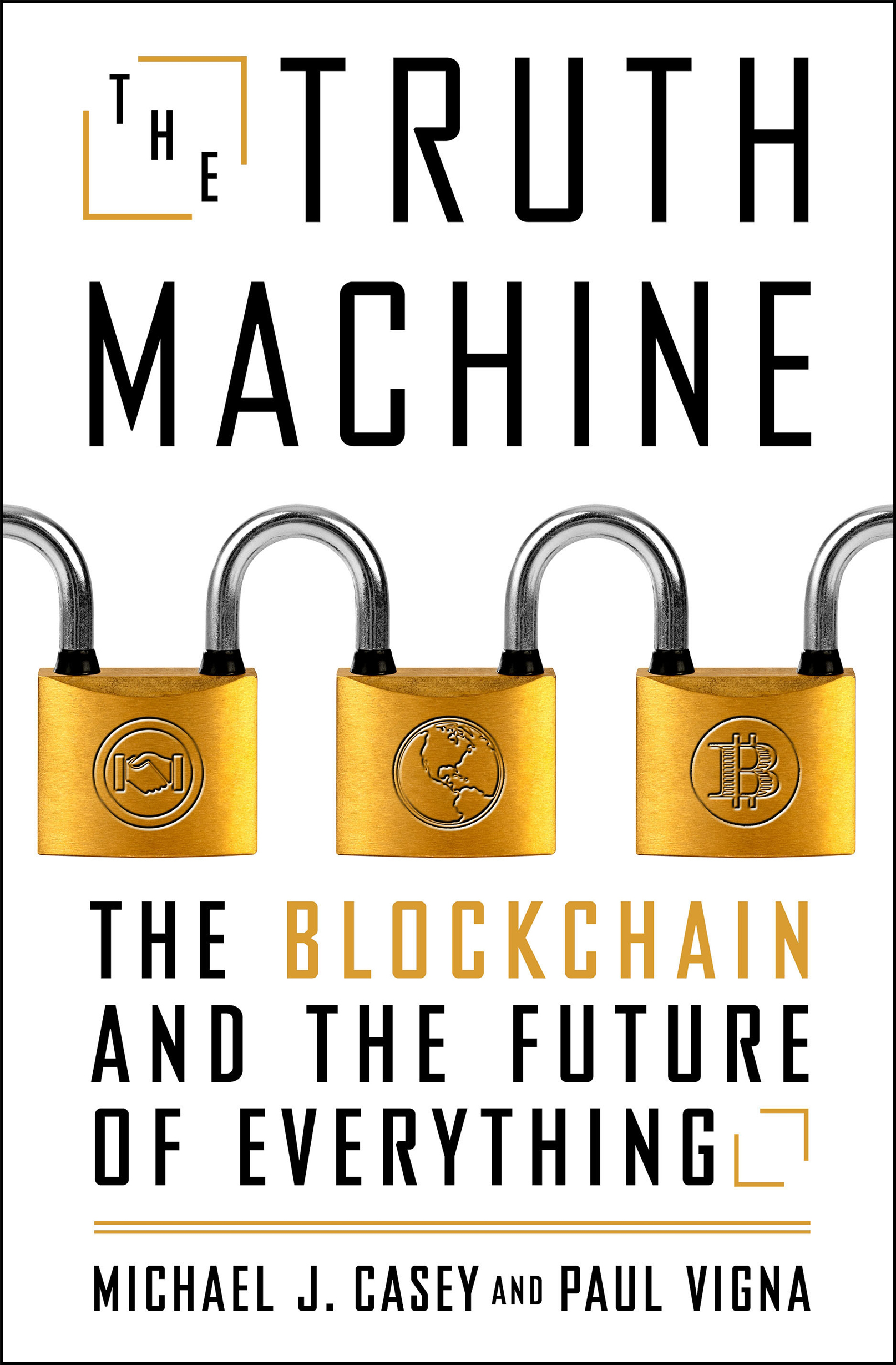Contents
Guide
Pagebreaks of the print version

The author and publisher have provided this e-book to you for your personal use only. You may not make this e-book publicly available in any way. Copyright infringement is against the law. If you believe the copy of this e-book you are reading infringes on the authors copyright, please notify the publisher at: us.macmillanusa.com/piracy.
For Liz, Jenny, Sarah, and Di
MC
For my mom and dad
PV
In The Age of Cryptocurrency , we explored the digital currency bitcoin and its promise of a fairer global payments system, one that functions without banks and other financial intermediaries. As that book was going to print, Bitcoins wider applicationhow its core operating system can help resolve problems of trust between individuals and businesses when they trade assets, enter into contracts, assert claims to property, or share valuable or sensitive informationcame to the fore. Within companies, governments, and the media, a groundswell of interest, including a fair bit of hype, turned toward what became known as blockchain technology.
In resolving longstanding problems of trust and enabling a community to track its transactions without entrusting that record-keeping process to a central intermediary, the blockchain idea promised a way to bypass the various gatekeepers who control societys exchanges of value. It could, for instance, let a neighborhood of prosumershouseholds that both consume power and produce it with solar panels on their roofstrade energy among themselves within a decentralized marketplace and without a profit-driven utility company setting the rates. Similarly, property owners, buyers, and mortgage lenders would not have to trust an unreliable government registry as the only record of deeds and liens when a more trustworthy one could be built on an immutable database managed by a decentralized network with less risk of corruption, human failure, or theft. These are just some of the many new applications that attracted peoples attention to this innovative idea.
The zeitgeist of public awareness had two big impacts on our lives. The first was that one of usMichael Caseygot so excited about blockchain technologys potential to change the world that he quit a twenty-three-year career in journalism to work on it full time. Less than six months after The Age of Cryptocurrency was published, Mike left The Wall Street Journal for MITs Media Lab. The labs frenetic director, Joichi Ito, who is commonly known as Joi, had recognized parallels between Bitcoins emergence and the software development hed witnessed during the early days of the Internet. Sensing a similar enthusiasm for a new, decentralizing architecture, Ito hatched a plan to bring powerful academic and financial resources to the vital task of developing this nascent technology. The result was MITs Digital Currency Initiative, a center where leading academics and students in the fields of cryptography, engineering, and finance could collaborate with Fortune 500 strategists, innovative startups, philanthropists, and government officials to design the digital architecture of a new Internet of Value. When Mike received an offer to join this initiative, he saw a once-in-a-lifetime opportunity to get in on the ground floor of an economic revolution.
The second impact is the book you are reading. In The Age of Cryptocurrency , we focused primarily on a single application of Bitcoins core technology, on its potential to upend currency and payments. Since the books publication, though, we have learned theres a risk in writing about technology: it changes, while the words on the page do not. So much has changed in three years, in fact, that we were compelled to write another book. The Truth Machine expands the conversation we began in 2015 and takes it to a level higher. It explores how Bitcoins technology and its various offshoots point to a general redesign of social organizations, fostering many more alternative applications.
In the modern economy, to control information is to control the world. This is seen in the ever-growing influence of tech behemoths like Google and Facebook, constantly accumulating data thats pertinent to who we are and how we interact with each other. In this twenty-first-century economy, power is defined by whoever has authority to collect, store, and share data. Currently, that authority is centralized. It is concentrated among a narrow number of giant tech companies. If youre wondering why thats problematic, just think of the influence that Facebooks hidden algorithm, which prioritizes the companys business model above all other objectives, has had on our politics. In incentivizing the creation and sharing of often-dubious information to trigger dopamine releases among social networks of like-minded people, its algorithm played an instrumental role in the bombshell U.S. elections of 2016.
The ideas behind the blockchain have now unleashed a struggle to turn that structure of concentrated power on its head, to figure out how the capacity to control and manage information might shift to a decentralized system that no one controls. It lets us imagine a world thats not dominated by Google, Facebook, or, for that matter, the NSA, one where we, the people, the core components of global society, get to say how our data is managed.
We felt it was important to get that message across. The Truth Machine is our attempt to convey it.
Sixty miles east of Amman, in a 5.6-square-mile block of dry, stony ground carved out of the Jordanian desert, lies the UN High Commission for Refugees Azraq camp. Teeming with 32,000 desperate Syrians living in pre-fabricated sheltersrows and rows of white, corrugated steel cabins arranged in a military-like gridAzraq poses the logistical challenges of a small city. Yet UNHCR and the other aid agencies that give the refugees food, shelter, and a modicum of hope cant count on the kinds of institutions and infrastructure that normal cities use to ensure order, security, and functionality for their residents.
All refugee camps are, by definition, short on what political scientists call social capital, the networks of long-established relationships and bonds of trust that allow communities to function, to engage in social interaction and exchange. But Azraq can seem especially devoid of it. There are police in Azraq, but they are Jordanian. They are not of the people, not of the community. And while the crime rates in Azraq are lower than those in nearby Zaatari camp, where 130,000 Syrians live in conditions that a UN review once described as lawless, this hot, dry, stony place is hardly welcoming. When Azraq was set up in 2014 as an alternative to Zaataris chaos, refugees complained that it lacked life. Electricity was sparse, which meant they couldnt charge their cellphones, cutting them off from family and friends. The lack of a functioning, trustful community also heightened the refugees fears of being abducted by the extremist organization Islamic State. Many initially refused to move to Azraq camp, and although the numbers have increased more recently, Azraq is still far below the 130,000 capacity for which it was built.
Its fitting then that this pop-up city, in real need of some functioning social capital, is now the scene of a radical experiment in new models of community governance, institution-building, and the management of resources. At the heart of that effort is blockchain technology, the decentralized ledger-keeping system that underpins the digital currency bitcoin and promises a more reliable, immediate way to trace transactions. The World Food Program (WFP), a UN agency that feeds 80 million people worldwide, is putting 10,000 Azraq refugees through a pilot that uses this system to better coordinate food distribution. In doing so, the WFP is tackling a giant administrative challenge: how to ensure, in an environment where theft is rampant and few people carry personal identifying documents, that everyone gets their fair share of food.


